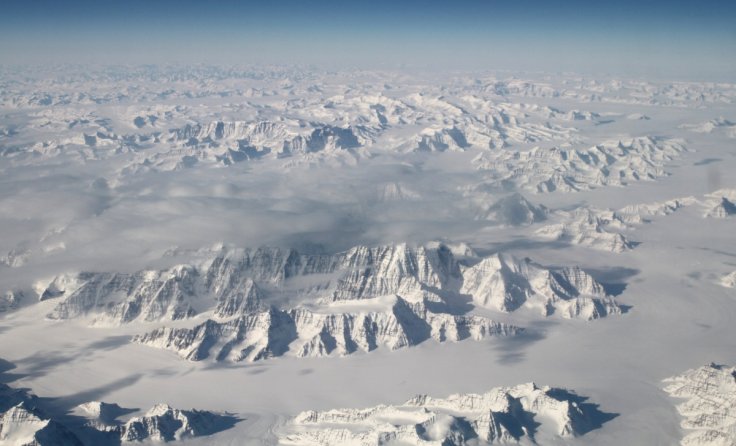The remains of a huge, ancient lake were discovered under Greenland, which was buried deep below the ice sheet located in the northwest of the nation and is estimated to be hundreds of thousands of years old, scientists stated. The huge fossil lake bed is a phenomenon that scientists have not seen before in this part of the earth, even though the Greenland Ice Sheet remains with a lot of mysteries hidden under the frozen lid.
Last year researchers confirmed the discovery of more than 50 subglacial lakes beneath the Greenland Ice Sheet, bodies of the defrosted liquid water trapped between the bedrock and the ice sheet, which is overhead. The new discovery is of a different nature, an ancient lake basin, full of eons of sedimentary infill, loose rock, which is measuring around 1.2 kilometers thick and then covered by another 1.8 kilometers of ice.
When the lake was formed, the region would have been free of ice, scientists said, and the basin would have got supported a monumental lake along with a surface area of around 7,100 square kilometers. That is around the same size combining the states of Delaware and Rhode Island, and the lake would have held at least 580 cubic kilometers of water.
NASA's Operation IceBridge Mission Found Lake Bed

While there is no method of knowing how the ancient lake is and scientists might be able to discover if they can analyze the loose rock material what are there now inside the basin. "This could be an important repository of information, in a landscape that right now is totally concealed and inaccessible," the lead researcher and the glacial geophysicist Guy Paxman from Columbia University said. "If we could get at those sediments, they could tell us when the ice was present or absent," the researcher added.
The giant lake bed, which is known as the 'Camp Century Basin' was identified via the observations from NASA's Operation IceBridge mission, which is an airborne survey of the polar regions of the world. During flights over the Greenland Ice Sheet, the squad mapped the subglacial geomorphology below the ice making use of some instruments measuring gravity, radar, and magnetic data. The readings showed the outline of the huge loose mass of sedimentary infill, which is made of less dense and less magnetic material than the harder rock around the mass.
The team thinks that it is possible that the lake formed in warmer times due to bedrock displacement because of the fault line underneath. Alternatively, the glacial erosions might have carved the shape of the basin. In either case, the scientists believe the basin can hold an important sedimentary record and might indicate when the region was ice-free. It can also offer insights into the past climate and environmental conditions in the region.
The information those buried rocks can provide might turn out to be vital information for interpreting what is happening in the world right now. "We're working to try and understand how the Greenland ice sheet has behaved in the past. It's important if we want to understand how it will behave in future decades," Paxman said.









